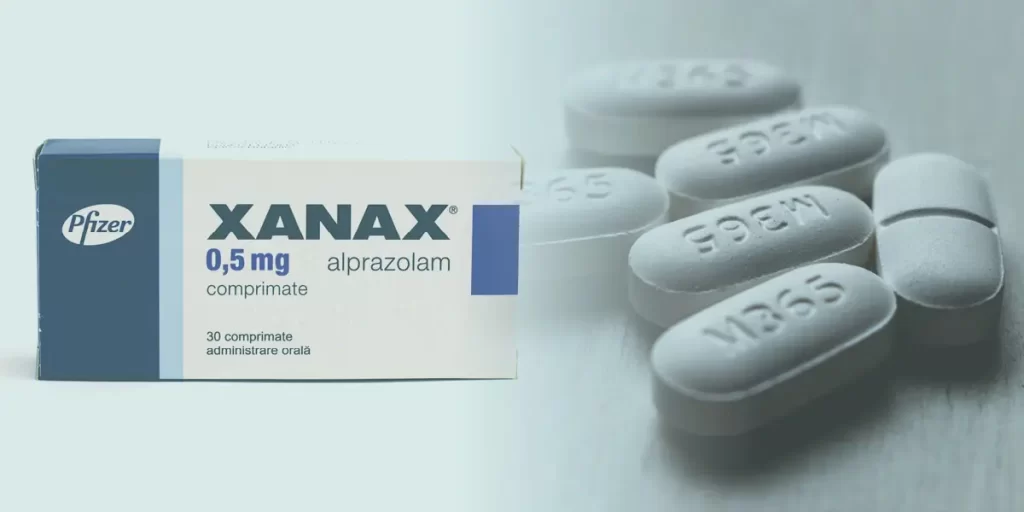Xanax Tolerance
Written by Jonathan Strum
& Medically Reviewed by Dr. Jessica Pyhtila, PharmD
Medically Reviewed
Up to Date
Last Updated - 6/17/2022
View our editorial policy
What Does a Xanax High Feel Like?
Xanax (alprazolam) is a benzodiazepine drug and central nervous system depressant that slows down the brain. The drug is a Schedule IV controlled substance, meaning it carries a risk of abuse, addiction and dependence. A Xanax overdose is also possible, especially when the drug is combined with substances such as opioids.
Some people abuse Xanax to try to get high. The effects felt during a Xanax high can vary from one person to another. If someone you love abuses Xanax to get high, it is important to understand the risks involved and learn about how you can help your loved one.
Does Xanax Make You High?
If you take Xanax as prescribed by a doctor and avoid taking Xanax that has not been prescribed to you, the drug is unlikely to make you high. However, some people abuse Xanax in order to get high. This high can occur from using higher than recommended doses of Xanax or mixing the drug with other substances.
What Does Xanax Feel Like?
As a central nervous system depressant, Xanax slows down the activity of the brain. As a result, the drug can have a relaxing, sedating effect for a person taking the medication as prescribed for anxiety or panic.
However, if someone takes a higher than recommended dose of Xanax or uses the drug despite having no medical need, there is a possibility of additional effects in some people, such as euphoria. However, most people will experience some type of sedation because their brain’s activity will slow due to the Xanax. Combining Xanax with other medications can exacerbate this effect, which can lead to a potentially fatal overdose in some cases.
Other Side Effects of Xanax
Xanax can have many side effects besides sedation, including:
- Drowsiness
- Lightheadedness
- Headache
- Dry mouth
- Bowel movement changes (either constipation or diarrhea)
- Confusion
- Depression
- Memory impairment
What Happens if You Mix Xanax With Other Substances?
Mixing Xanax with other substances, especially central nervous system depressants like opioids, can be extremely dangerous. This can worsen Xanax’s side effects and increase the risk of overdose, which can be fatal in some cases. Overall, 16% of opioid overdose deaths in 2020 also involved benzos like Xanax. The FDA has a Boxed Warning on Xanax so that people avoid mixing Xanax with other drugs.
Error: Contact form not found.
How Long Does Xanax Take To Kick In?
Xanax can start working quickly, and it reaches its peak in the body in around one to two hours.
How Long Do the Effects of Xanax Last?
Xanax is a short-acting drug, and its effects generally wear off in six to 12 hours. However, both short- and long-acting forms of Xanax are available. The short-acting form is usually taken multiple times a day, while the long-acting form is taken once daily.
What Is a Xanax Comedown?
Xanax does not cause a comedown. For the most part, medications that cause a comedown are stimulants that rev up the central nervous system and increase dopamine and norepinephrine levels. Over time, the brain gets depleted of dopamine and norepinephrine, leading to a comedown that makes a person feel exhausted for days.
Xanax is not a stimulant, so it does not impact the brain in the same way. However, taking too much Xanax can cause symptoms of extreme sleepiness and exhaustion that may be similar to how a person feels when coming down off a stimulant binge.
What Is Xanax Withdrawal Like?
When you take Xanax on a regular basis, your brain becomes accustomed to its presence and starts to adapt accordingly. This means that if you suddenly stop Xanax, you may experience withdrawal symptoms. These can include:
- Sweating
- Pulse rate faster than 100 beats per minute
- Hand tremor
- Insomnia
- Nausea or vomiting
- Hallucinations
- Agitation
- Anxiety
- Seizures
If you suspect that someone is going through Xanax withdrawal, you should seek medical attention.
Can You Build a Tolerance to Xanax?
You can build a tolerance to Xanax, but how long it takes for this to happen depends on the person. If you are building a tolerance to Xanax, you may notice that the dose you once took is no longer giving you the same effects as before. This is because your brain has become used to the medication and has begun to adapt to its presence.
Depending on your reasons for taking Xanax, tolerance can mean different things:
- If you are prescribed Xanax for anxiety or panic and believe you are becoming tolerant, you should discuss other treatment options with your doctor.
- If you misuse Xanax and notice tolerance developing, this is a warning sign that you may be on the road to addiction and need treatment.
Seeking Help for Xanax Addiction
Xanax is an addictive substance that can be dangerous when abused. Fortunately, our Xanax detox and rehab programs can wean you off — and keep you off — Xanax for good. If you or a loved one is struggling with Xanax misuse, contact The Recovery Village Ridgefield today to learn more about treatment programs that can work well for your situation.
We are here when you are ready.
Speak with a Recovery Advocate today to talk about your treatment options.
Sources
View Sources
Kang, Michael; Galuska, Michael A.; Ghassemzadeh, Sassan. “Benzodiazepine Toxicity.” StatPearls, June 27, 2022. Accessed August 28, 2022. National Institute on Drug Abuse. “Benzodiazepines and Opioids.” April 21, 2022. Accessed August 28, 2022. Drugs.com. “Alprazolam.” November 9, 2020. Accessed August 28, 2022. University of North Carolina. “Benzodiazepine Equivalency Table.” Accessed August 28, 2022. PsychDB. “Sedative, Hypnotic, or Anxiolytic (Benzodiazepine) Withdrawal.” March 29, 2021. Accessed August 28, 2022.
Authorship






